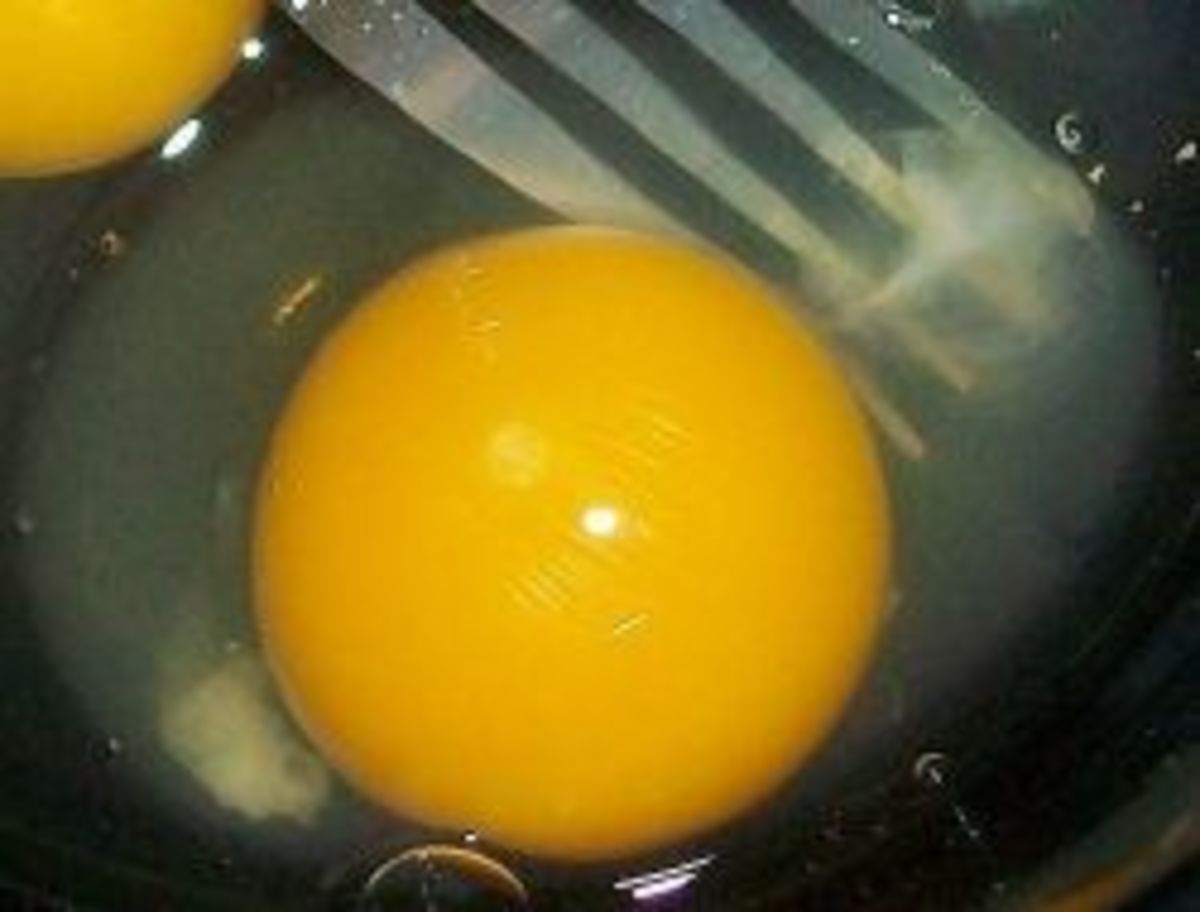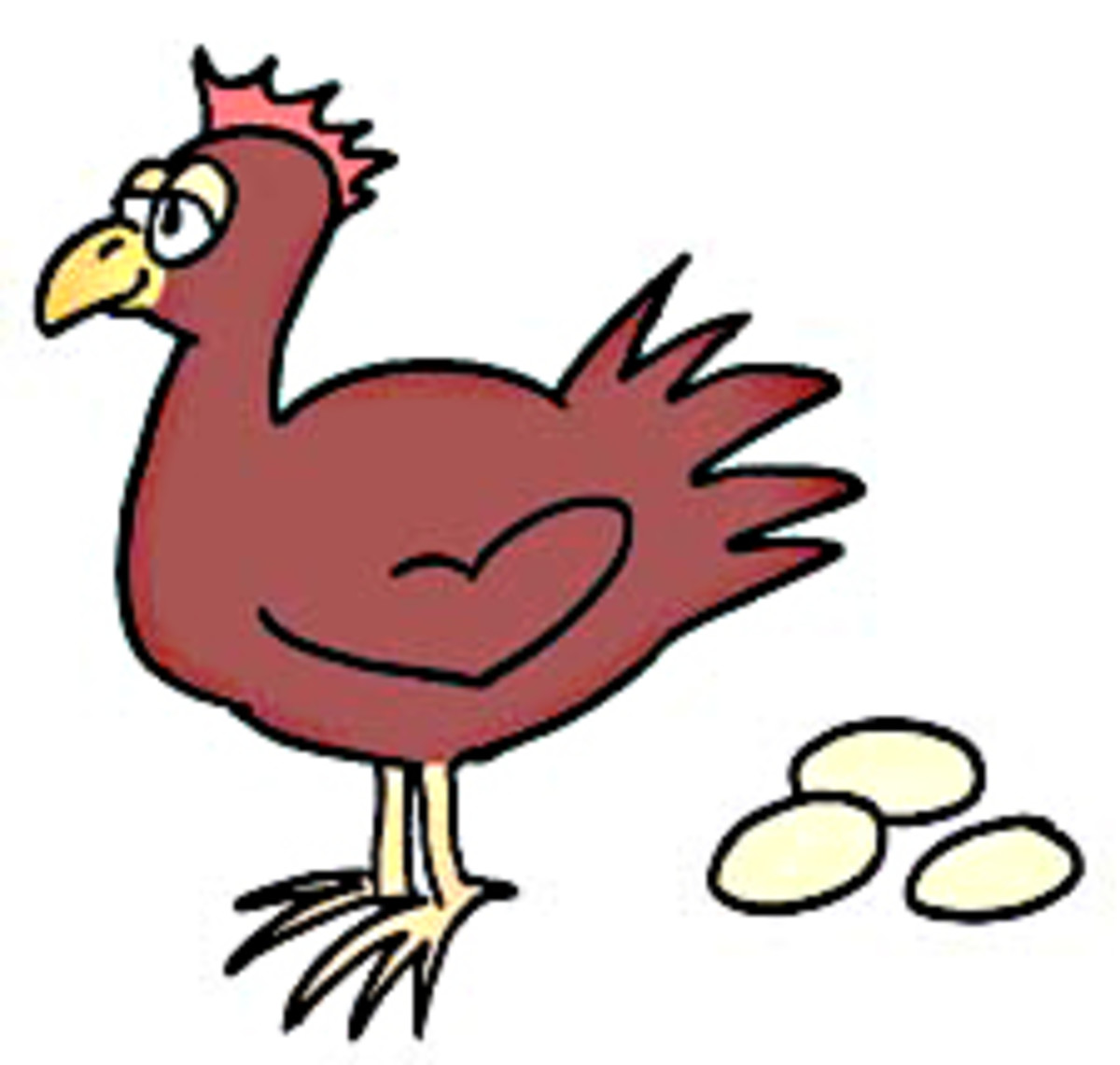Factory farming chickens and eggs: appalling inhumanity or necessary evil?
Introduction
Chickens are big business. There are far more of them in the world than any other bird - approximately 26 billion in 2008 (don't ask me who counted them, I certainly didn't....) They are a large and important source of protein in human diets across the world, both for the meat and for the eggs.
People also like eating both; they are popular foods. And in order to satisfy the demand for cheap, reliable sources of both eggs and chicken, they are mass-produced all over the world.
A natural chicken, wandering around in a flock outside, might live to be 10 or 12 years old. Standard factory-farmed chickens are killed at about 6 weeks old, having been encouraged to grow as fast as possible.
Egg-laying chickens are usually killed at 12 - 24 months old.
Free range chickens
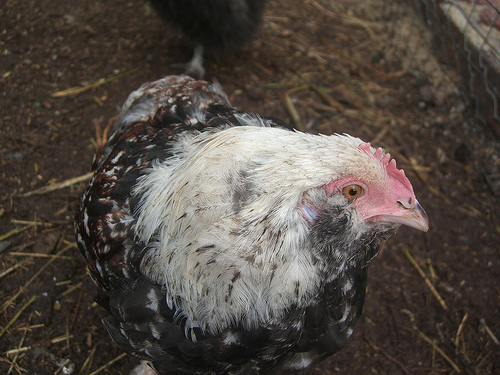
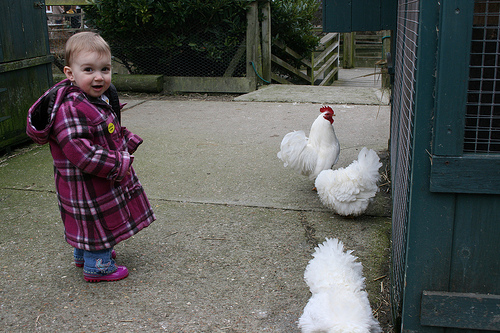
Chicken and egg farming until c. 1940
In terms of farming, there isn't much doubt which came first - egg farming came before chicken farming.
Until a few decades ago, chicken meat was almost a by-product of egg production.
A family might keep a few chickens, and would eat only the young male ones, and the old females past their egg-laying peaks.
Similarly, egg-farms would sell young male birds and old layers to butchers or grocers, for the meat. The eggs were, however, the primary focus.
My grandmother bought chicken for her household in the 1930s and 1940s (as a teenager, then a young married woman) in markets in Liverpool, a large port city in north west England.
It was usual to choose a live chicken, which would then be strangled and handed over. Freshness was thereby guaranteed.
Chicken was an expensive treat. It was usually more costly than mutton, pork or beef, and was eaten on special occasions. My mother remembers chicken being an occasional luxury in the 1950s and 1960s, as she grew up.
- The British Poultry Council
The British Poultry Council is the voice of the British poultry meat industry, and champions the cause of farmers and food producers. It has detailed articles on its website about various aspects of the trade.
Chicken and egg farming today
This has all changed.
Since the Second World War, in particular, the two areas of farming have separated and become agribusiness or factory-farming.
The numbers have exploded.
In the United Kingdom, for example, 5 million chickens were produced for meat in the entire year.
In 2007, the last year for which complete figures were available, that had risen to 860 million birds. Only 5% of these were organic, free-range chickens.
Chicken comes to the western consumer in plastic-wrapped portions, and is astonishingly cheap.
If I were to buy a chicken and a dozen eggs today, I would not pay very much. A quick look a few supermarket websites in the UK suggests these average prices:
- Cheapest 12 eggs £1.64 / $2.46
- Most costly 12 eggs (organic, free-range) £4.10 / $6.15
- Cheapest chicken £1.99 / $2.98 per kg / 2.2lb
- Most expensive chicken (organic, free-range) £5.50 / $8.25 per kg / 2.2lb
Sounds great, doesn't it?
But it's not all good news. There are cons, and they involve animal welfare and ethics, species manipulation, concerns over the food-chain and drugs, pollution and waste production, food poisoning, and diseases being transferred from animals to humans.
What is factory-farming?
A definition inevitably involves some generalisations.
Each country has different standards for chickens raised for food, or kept to produce eggs, and different rules about drugs and supplements.
Detailing every country's rules would be tedious beyond belief, so this is an overview, with an emphasis on UK facts.

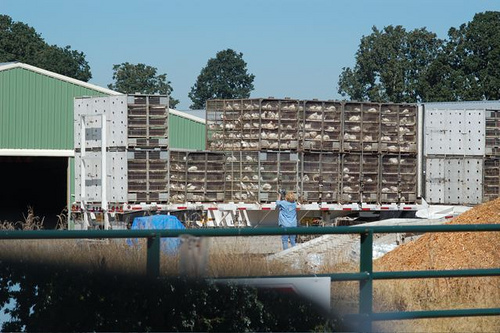
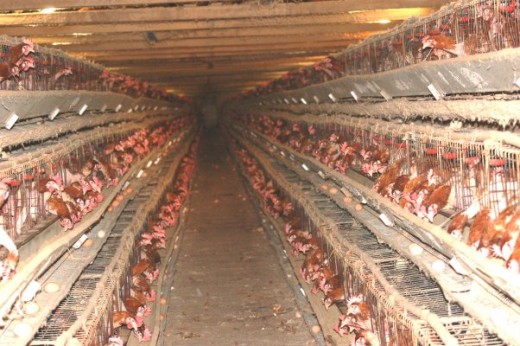
Chickens reared for meat
- Many hens are kept either in cages, or in a huge flock in enclosed barns. They do not go outside for their entire, short, lives;
- They are bred to gain weight as quickly as possible, and some suffer limb injuries as their bodies are too heavy to be carried by their legs, and some suffer heart failure;
- The average time from hatching to slaughter is 35 days;
- They are kept in dim lights most of the day, to encourage them to eat more and sleep less;
- Many are "de-beaked" to prevent them attacking other birds in such confined conditions;
- They are fed antibiotics and supplements to prevent illness and encourage swift growth;
- 90% of British chickens have an area the size of an A4 piece of paper, so they cannot turn round properly.
Chickens which lay eggs
- They are mostly kept in small cages, and cannot move around or stretch their wings fully. 70% of British egg-layers are either in crowded barns or cages. A normal and legal cage is 20 inches by 20 inches, and contains 4 or 5 birds;
- Cages are made from wire, to allow droppings to go through the cage, and they are sloped so that the eggs roll out for collection;
- On average, a layer produced 340 eggs per year;
- The cages are stacked on top of each other in sheds, and many contain tens of thousands of chickens. 70% of battery layers are in sheds containing 20,000 to 100,000 birds, and they are incredibly noisy;
- Hens are often over-fed and given drugs and supplements, as with meat chickens
- The Battery Hen | Down the Lane
About Battery Hens, their farming and welfare - Inside the battery chicken sheds
Poultry farmers respond to a campaign by celebrity chefs to raise standards of chicken production. - Battery Farming
Inside Out South West meets one woman who is determined to give battery hens a new life in the open air.
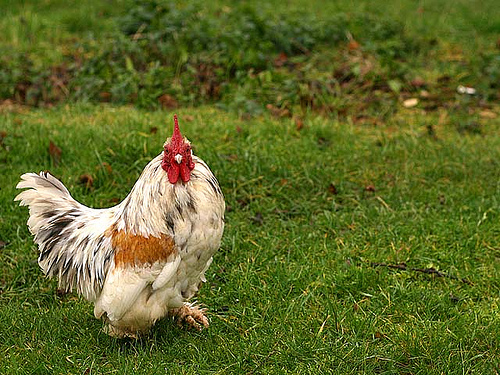
Animal welfare concerns - illness
Many birds suffer serious and painful conditions.
Meat chickens
An entire batch is raised at once, usually in a shed together. The floors are not cleaned except between batches.
- Up to 80% of chickens suffer from either rickety legs or heart-failure;
- Because of the lack of cleaning, about half develop sores from urine and fecal contamination;
- Approx. 6% die before slaughter, from respiratory disease, fatty liver, and heart failure;
- The de-beaking is painful;
- Aggression between birds is common;
Egg-laying chickens
- By the end of their lives, approx. 80% of chickens have injuries to their legs and feet from the wires floors of the cages;
- the breeding and feeding to maximise egg-production, coupled with the lack of exercise, causes fatty liver hemorrhagic syndrome, calcium deficiency and broken bones, prolapses of the reproductive system, bits of large eggs stuck inside the ducts, and dimming of the eyes;
- aggression between birds is common;
- de-beaking is painful.
- The RSPCA's campaign
The Royal Society for the Prevention of Cruelty to Animals (the RSPCA) has a campaign here against what it sees a cruel conditions for chickens. - Egg Production
An insightful look into how eggs come to be in our markets.
Animal welfare concerns - stress and deprivation
The animals never, in their entire lives, see the outdoors, natural light, or fresh air.
Chickens are mobile birds which live in flocks. Left to themselves, they potter about, stretch, fluff their wings, and scratch in the dirt.
None of this is possible in battery or shed conditions. They are too crowded for any form of natural behaviour.
As a result, they are bored and frustrated.
Human health concerns
Many egg-layers (in particular) but also meat chickens suffer from e-coli and salmonella, both very serious illnesses which can be caught by humans. The crowding in sheds and cages makes such diseases impossible to minimise or eradicate.
The drugs and supplements in the meat and eggs may cause long-term adverse effects when introduced into the human food chain.
Possible epidemics
We've all heard of "bird 'flu" or "Avian 'flu". This is a pandemic which many experts fear is on its way. Influenza is an illness which can jump the species barrier, and there is a real and serious risk of a world-wide epidemic if the particular virus of current concern (H5N1) is passed to humans.
Massive concentrations of birds, reared for meat or eggs, makes it more likely that disease goes un-noticed, and that wild birds can also be infected.
Conclusion
There is absolutely nothing which would lead me to eat anything other than free-range eggs or chicken. I don't eat much meat anyway, but that I do buy is always both free-range and organic.
The factory-farming method does produce vast quantities of cheap protein, and I can't deny this. But we can, if we choose, get protein either from ethically-reared birds, or non-animal sources.
I can't see factory-farming as justifiable on any ethical level. The sheer cruelty, pain, boredom and frustration is just horrifying beyond belief.



